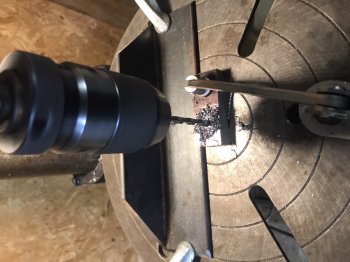Chris Railey
Well-Known Member
I drilled my last crooked line of holes for a guard last night. I have decided to add a machinist's vise to my drill press so I can maybe drill a straight line of holes. My question is this: I remember some on here talking about chucking an end mill in a drill press and using that with a machinist's vise to cut a slot in a guard. Is it worth it to invest in an end mill for that task? My drill press is a huge old school Craftsman floor press with a big motor. If I went slow and a little at a time would that work? Or should I stick to drilling a line of holes and connecting them with a file? Thanks.
P.S. A mill is on my buy list but it will be next year because the hydraulic forge press must come first.
P.S. A mill is on my buy list but it will be next year because the hydraulic forge press must come first.

